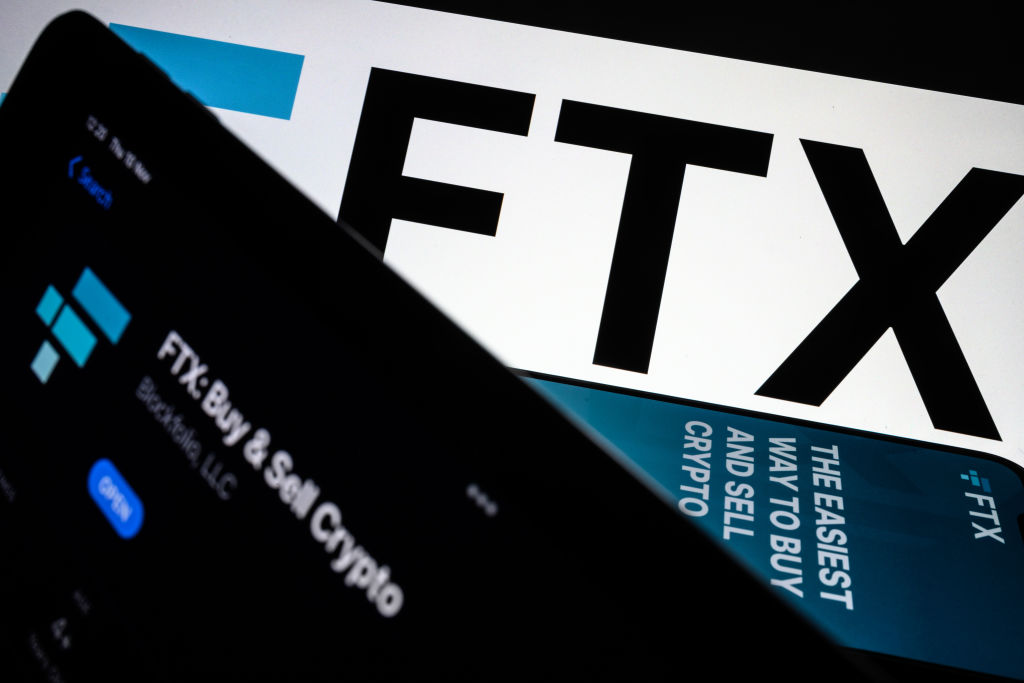Gary Wang, the mysterious co-founder and chief technology officer of failed cryptocurrency exchange FTX, testified Thursday as the criminal trial of Sam Bankman-Fried entered its third day.
While Bankman-Fried, the exchange’s co-founder and CEO, became the very public face of FTX, Wang stayed in the background right up until the exchange’s collapse.
“I just coded,” Wang told the court, describing the difference between himself and Bankman-Fried, who would speak to the media, lobby and talk with investors.
Like Bankman-Fried, Wang — who was born in China — studied at the Massachusetts Institute of Technology. He previously worked at Google before co-founding crypto hedge fund Alameda Research. He told the court that he owned 10% of Alameda, while Bankman-Fried owned 90%, according to a live blog of the trial from court reporting organization Inner City Press.
“Why research?” asked the prosecution, enquiring about the hedge fund’s name.
“Sam said it would be easier to get a bank account,” Wang responded.
Alongside Caroline Ellison, the former co-CEO of Alameda Research, and Nishad Singh, FTX’s director of engineering and co-founder, Wang pleaded guilty to wire fraud among other criminal charges. Bankman-Fried is facing seven charges including wire fraud and conspiracy to commit money laundering in relation to the operation of FTX.
“What was the wire fraud?” the prosecution asked.
“We allowed Alameda to withdraw unlimited funds,” said Wang, adding that those special privileges were written into the code.
A profile from The Block, which cited sources who worked with Wang, described Wang as someone who rarely talked, but shared a close relationship with Bankman-Fried and Ellison. Unlike Wang, Bankman-Fried wasn’t a coder and previously told Business Insider “I don’t code. I’m trash. I have not written any of FTX’s code base.”
Founded in May 2019, the exchange operated an extremely lean development team and it was built by two developers. By late 2021, FTX had a crew of 10 to 25 developers working on the exchange and all its subsidiaries, said Bankman-Fried in the Insider interview. The skeleton crew meant that fewer people were likely to stumble upon the backdoor to Alameda implemented by Wang and other members of Bankman-Fried’s inner circle.
Friends to foes
Earlier in the day, Adam Yedidia, another close friend of Bankman-Fried’s and a former FTX engineer, told the jury how he stumbled on a bug in FTX’s code that was showing Alameda Research’s liabilities as US$16 billion. After fixing the bug, Yedidia discovered Alameda actually owed US$8 billion in debt.
“I told Sam, ‘I’m not going anywhere,’ then I resigned,” Yedidia said. “What changed?” asked the prosecution. “I learned that Alameda had used customer deposits to pay its loans,” Yedidia said.
Matt Huang, an investor at venture firm Paradigm, also testified on Thursday describing the firm’s decision to invest in FTX and how it had been misled by Bankman-Fried on the exchange’s “best-in-class” liquidation engine. That mechanism is used in trading to force the closure of positions if a trader fails to meet margin requirements. During bankruptcy filings last November, it emerged that Alameda was exempt from those protocols.
“Were you told Alameda was exempt from the liquidation engine?” said the prosecution. “No,” responded Huang.
“Sustained”
Over the course of the day, U.S. District Judge Lewis Kaplan appeared to grow weary of the defense’s repetitive questioning. He told Christian Everdell, one of Bankman-Fried’s lawyers, to curb his repetitive questioning prior to a court recess. During the defense’s questioning, many objections from the prosecution received a response of “sustained” from the judge, which means the objection has been approved.
“I’m sure the jury would appreciate anything you can do on repetition,” said Kaplan to defense lawyer Mark Cohen when the prosecution highlighted they were already running over despite this being only the second day of hearing witness testimonies.
Questioning of Wang will continue tomorrow.






